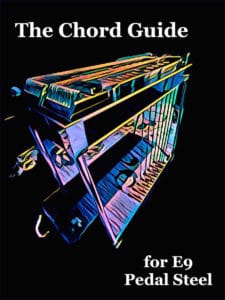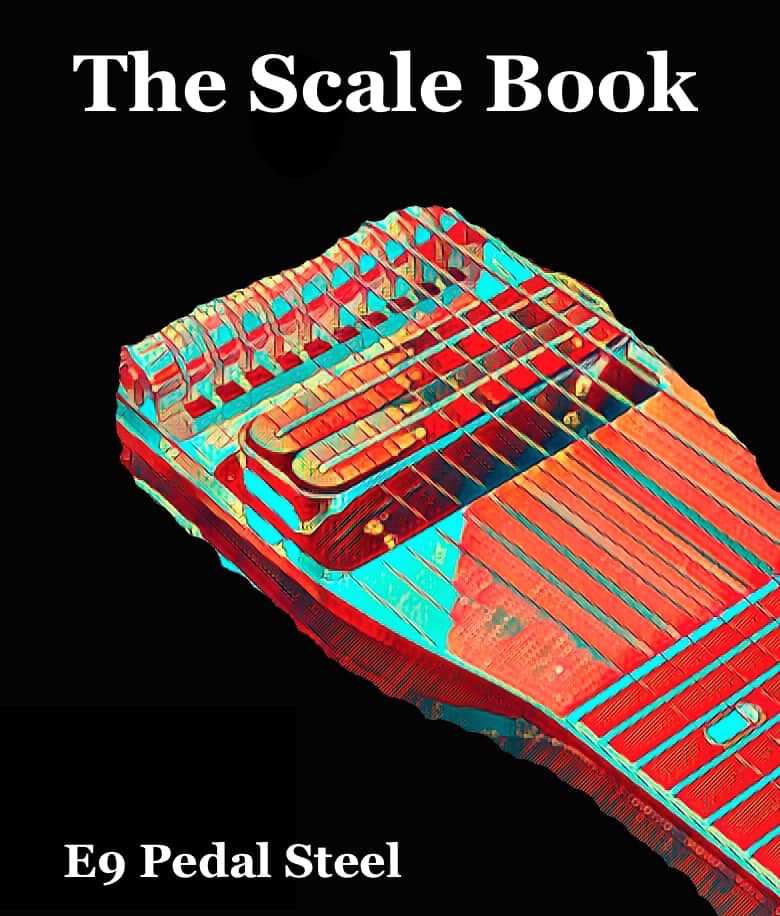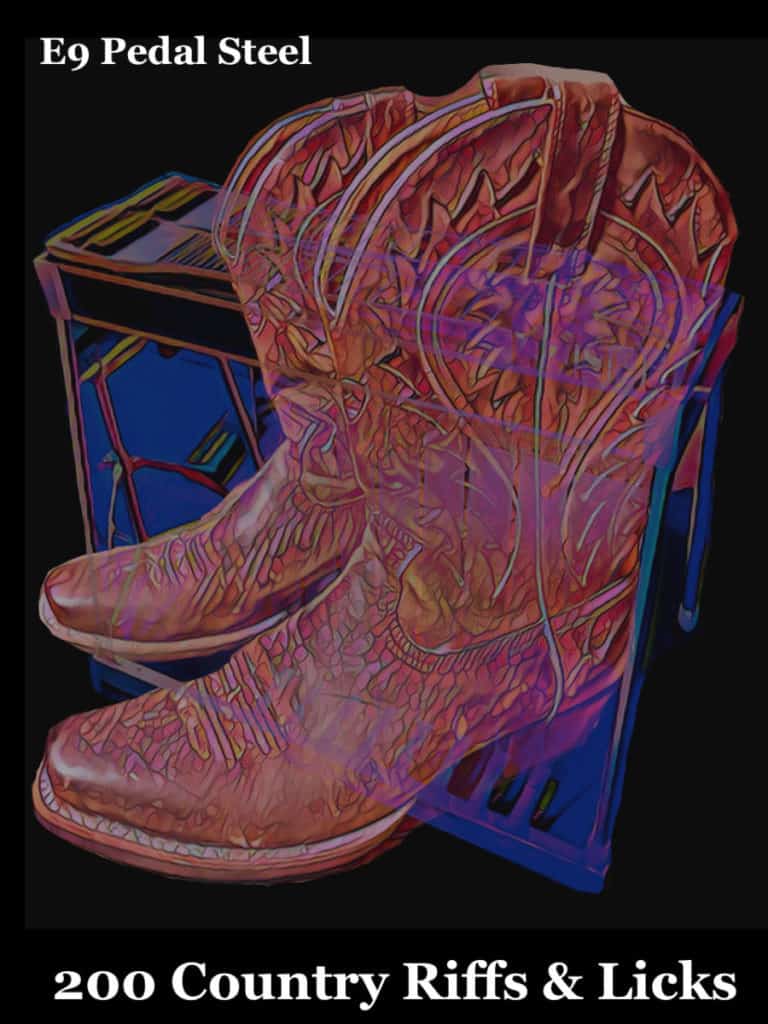As an Amazon Associate Playpedalsteel.com earns from qualifying purchases. This page contains affiliate links.
The pedal steel has a characteristic sound, and its pickup contributes to the overall tone of the steel guitar when amplified. Pedal steel guitars usually have pickups that are designed specifically for them.
Most pedal steels have a pickup with a high output. The signal that is sent directly from the output of the pedal steel is usually “hotter” than a regular guitar. It is common for pedal steel players to use a single coil pickup for a brighter tone with presence, however some players will use a double humbucker pickup.
Most pedal steels that are purchased new from manufacturers will come with pickups installed and ready to use. Also, most used steel guitars will have pickups on them as well, since it it is an important part of amplifying the pedal steel.
Let’s take a closer look at pedal steel pickups, and learn more about their sound and application…
Types of Pedal Steel Pickups
Most pedal steel pickups are designed for use with ten strings, since the majority of pedal steel guitar tunings utilize ten strings. If a pedal steel has two or more necks, there is usually a pickup for each neck of the guitar.
Pedal steels that use single coil pickups will sometimes emit a more twangy, bright sound than its double humbucker counterpart. Usually, pedal steels that use double humbucker pickups will have a warmer, deeper tone that resonates well with rock and jazz music especially.

If you decide to use single coil pickups, keep in mind that these are more likely to pick up interference from your playing environment. This may be heard as a slight hum in the amplifier, PA, or recording system that can sometimes be caused by dimmer lights or the electrical wiring of the building.
Double humbuckers have the unique ability of not emitting this noise most of the time, which can be especially helpful for recording situations. If you do use a single coil pickup, then many skilled sound engineers will have the ability to help minimize this noise in the room, or on the audio track that is being recorded.
Brands & Manufacturers
There have been many brands and manufacturers of pedal steel pickups over the years, and some companies that build pedal steels will even make their own pickups. Because the pickups can play such a large role in the amplified sound of a pedal steel, many players and manufacturers will use a high-quality pickup that is designed for steel guitar.
Bill Lawrence pickups are a favorite among many players, and Lollar makes pickups that are becoming more popular for lap steel guitars. George L pickups are also a go-to choice for many pedal steel players, and GFI utilizes pickups made by this brand. Also, check out the pickups from Steeltronics, which is a modern brand that offers customizable pickups for players.
Telonics is another pickups brand that pedal steel players use. If you purchase a pedal steel guitar nowadays, there is a good chance that the pickups on it are made by Bill Lawrence, George “L”, or Telonics. However, some companies like Mullen manufacture their own. Furthermore, Lace builds pickups for 8, 10, and 12 string pedal steels and is another brand you may want to consider taking a closer look at.
High-Output (“Hot”) Pickups
Due to the pedal steel’s unique ability to sustain notes with a bar and volume pedal, most pedal steel pickups are designed to emit a higher output signal than many other instruments. This can help extend the sustain of notes played on the instrument, while still preserving the tonal qualities that are inherent in it.
Most pedal steel amps are designed with more headroom that guitar amps, which helps keep the signal from breaking up and distorting through the amplifier. If an amp doesn’t have enough headroom for pedal steel, often the sound will lose clarity, distort, and have less frequency range response.
For an amp to have enough headroom for pedal steel, it will usually need more wattage and power than many other amps. Although not directly related to a pedal steel’s pickup, having a 12” or 15” speaker size can help capture the full frequency range of the instrument.
Finding The Right Pickup For You
Since most pedal steel guitars (whether new or used) come with a quality pedal steel pickup already in the guitar, most players utilize the pickup that is already on the instrument. However, you may decide you want to change your pickup because of a certain tone you are seeking, or there may be issues with your current pickup.
If you decide to buy or use a different pickup, keep in mind that it’ll have to be installed by a professional, or someone with the expertise to install a pedal steel pickup. When choosing a pickup to use, consider what reason(s) you have for putting a different pickup on.
You may be looking for a brighter tone, more clarity, a double humbucker to eliminate unwanted noise, or just a different sound that you’re accustomed to. Having some tonal direction can certainly help you narrow down what pickup you’d like to use, which can make it easier to find a suitable pickup from whatever brands and manufacturers you’re considering.
Also, if you know someone with the expertise, swapping pickups from different pedal steels that you own is another option. You may find that a certain pickup sounds better on one guitar than another. Players also find that certain necks and tunings of pedal steels benefit from a different pickup compared to others.
For instance, the C6 neck is commonly known for its expressive capabilities within jazz music, in which sometimes a warmer, more rounded sound can be nice to hear. In this case, you may decide to install a double humbucker pickup on this neck and a single-coil on the E9 neck to preserve some of the brightness in tone that you enjoy when playing traditional country music.
Conclusion
There are many factors that contribute to the tone you get when you play pedal steel, and the pickups you use certainly play a role. As you play different pedal steels with different pickups, you may begin noticing slight differences in their tones.
Although the amp you use can also affect your tone greatly, you may be able to use a similar setup each time as you experiment with different pickup types to hear the contrasts. Or you may be able to switch out the pickup on your pedal steel through your own expertise, and compare the differences in sound.
Thanks for checking out this page, hope it is helpful and makes playing more enjoyable! If you’re interested in diving deeper into playing E9 pedal steel, check out these resources and guides…
The Chord Guide for E9 Pedal Steel (E-Book, Digital Download)

Learn the chords on the E9 neck in a way that makes playing simple and enjoyable…
- Almost Every Chord You’ll Ever Need for E9
- Intuitive and Easy to Use
- Make Use of Pedal and Lever Combinations
- Example Tabs of Chord Movements
- Easily Utilize the Nashville Number System
- Great For Any Key and Style of Music
Includes a bonus section of over a hundred pages of extra chord charts, key references, and more!
Playing Pedal Steel:
The Essentials
An easy and intuitive approach to mastering the pedal steel…
- An in-depth look at bar control, the right hand, using pedals, & the volume pedal
- Multi Angle Views – that you can always reference.
- Ways to Practice, How to Practice, What to Practice.
An online pedal steel lesson series – includes a free pedal steel EBook!
More Digital Downloads for Pedal Steel…
The Scale Book for E9 Pedal Steel

Over 1,000 Pages with Tabs and Diagrams!
- Easy to Use Reference for Practicing
- All Major and Minor Pentatonic Scales, Modes, Major Scales
- All Keys, and Covers the Fretboard
- Includes Pockets of Scales
The Art of Right Hand Technique

A detailed look at one of the most challenging and mysterious aspects of steel guitar playing: the right hand…
- An In-Depth Guide to Picking and Blocking
- How to Efficiently and Accurately Play Notes on Steel Guitar with Info, Advice, and Tips…
- Great for Pedal Steel, Lap Steel, and Console Steel Guitar
- Over 100 Pages with Graphics, Illustrations, & Practice Exercises
200 Country Riffs & Licks for E9 Pedal Steel

Add these country licks to your playing repertoire…
- Easy to Read Format
- Includes Rhythmic Notation
- Playing Over Chord Changes
- Great for Country, Alt-Country, & Honky-Tonk Styles
